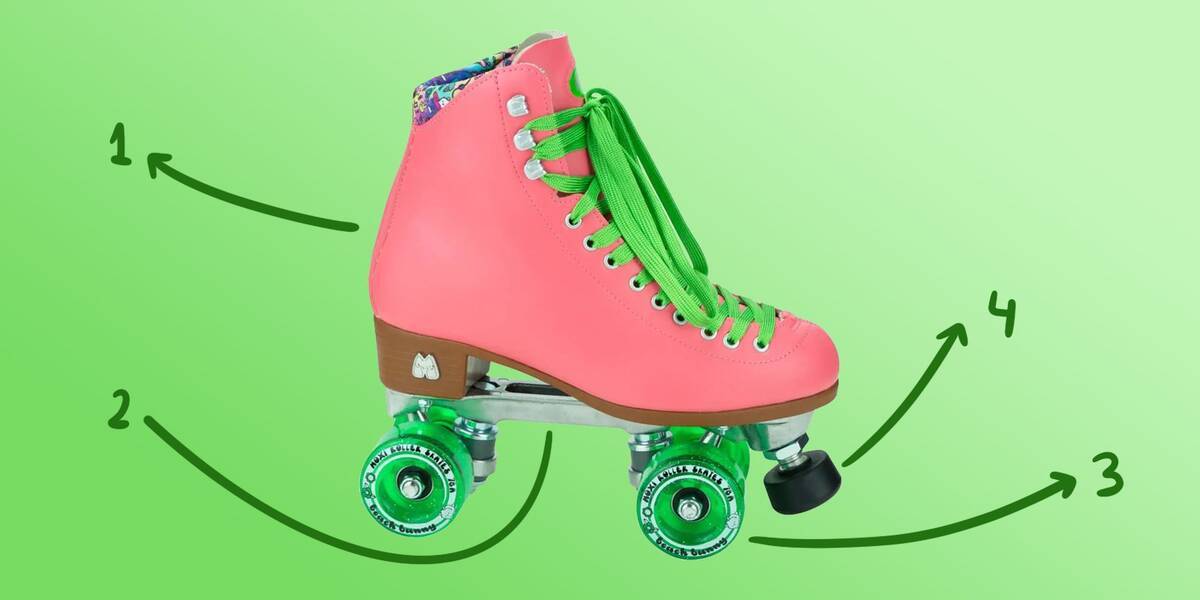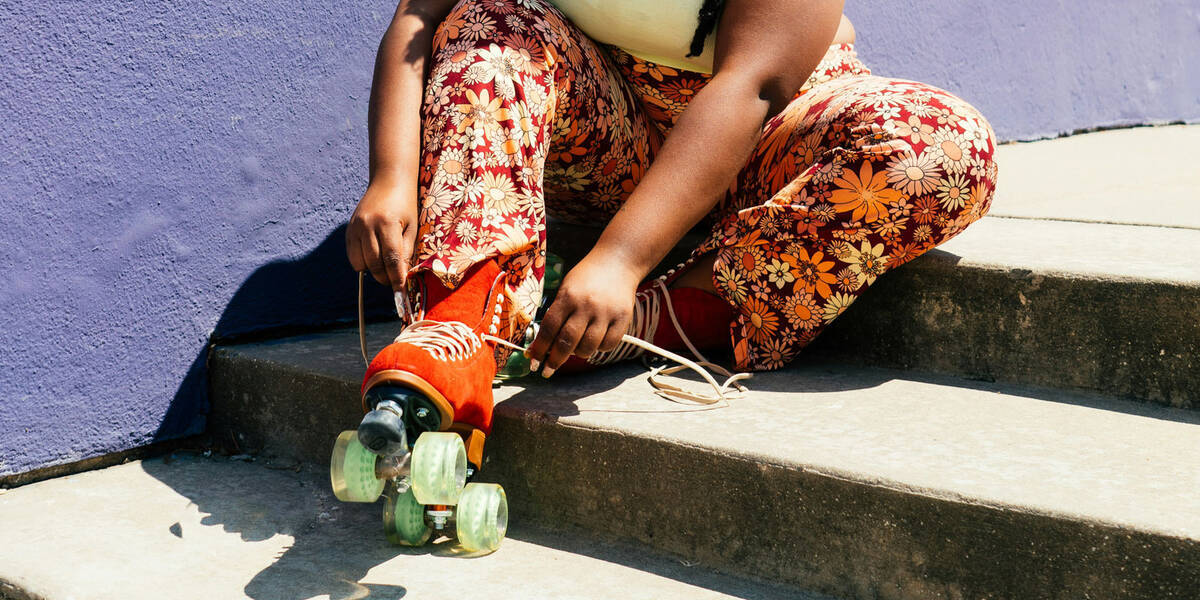Purchasing the Premier Beginner Roller Skates

Discovering the ideal roller skates for novices involves prioritising comfort and stability to guarantee an enjoyable skating experience. To assist you in navigating the multitude of options, we have assembled this guide with top recommendations on selecting your initial pair of roller skates. This guide is replete with all the necessary details you’ll need.
Overview
What Should Beginners Look for in Roller Skates?

- Boot
- plate/truck
- Wheels
- Toe stop
As a novice, securing a pair of roller skates that ensure comfort is crucial to maintaining patience while you learn. Opt for softer wheels, as they help in absorbing vibrations from surfaces, thus making them easier to manage. Also, remember, larger wheels may pose more control challenges. Choose skates that offer superior ankle support, foam liners, and soft wheels that best fit your size.
These features will have you prepared to embark on quad skating confidently:
- Ankle Support: A high boot furnishes better ankle support and stability, which is vital for beginners.
- Comfortable Liners: Seek roller skates with padded foam liners to ensure comfort during use.
- Wheels: Soft wheels (usually around 78A-85A durometer) afford superior grip and a smoother ride, making them superb for beginners. A wheel diameter ranging from 54 mm to 58 mm is ideal for beginners; smaller wheels allow for easier control.
- Toe Stop: A sturdy toe stop is vital for safety and control.
To view our complete range of beginner roller skates, follow the link below and filter our selection by “skill level”:
How to Determine the Proper Size for Beginner Roller Skates?

Selecting the correct roller skate size isn’t simply about choosing based on your shoe size. Skate sizes may differ from brand to brand and model to model, necessitating a precise measurement of your foot prior to selection. This precise foot measurement can be compared with the specific skate model’s size chart.
If you are in between sizes, opt for the larger one.
Here’s how you can measure your foot accurately:
- Stand on an even, firm surface.
- Place a sheet of paper against the wall.
- Stand with your heel against the wall and your foot flat on the paper.
- Mark the tip of your longest toe on the paper.
- Measure the length from the wall or the edge of the paper to your mark.
- Measure both feet and use the larger measurement when selecting your skate size.
Following these steps will help ensure your skates fit impeccably, ensuing a cosy and pleasurable skating experience.
How Should Properly Fitted Roller Skates Feel?

Roller skates ought to fit snugly around the foot without causing discomfort. Poorly fitted skates may lead to discomfort and possibly cause injuries. It is advisable for beginners to purchase skates that adequately support their ankles and have lace-ups that firmly secure the boot around the ankle.
Consider these aspects when trying your first pair of skates:
- Break-In Period: It might take some time for new skates to be broken in. The ones with foam padded liners should offer immediate comfort.
- Toe Space: Your toes should be close to the tip of the skate without touching the nose. There should be minimal room to wiggle your toes.
- Ankle Support: The skates should lend ankle support to the sides, while also allowing you to flex your knees and ankles forward.
- Laces: While lacing may seem complex, beginners need only tighten the laces firmly, but avoid excess tightness to prevent discomfort.
The Role of Toe Stops on Roller Skates

Toe stops are essential components on roller skates, enabling speed control and stopping ability. Located at the front of each skate, they are instrumental in executing various braking techniques as they generate friction with the surface. Additionally, they provide control and stability in manoeuvres, akin to toe picks on figure skates.
These are pivotal for safety, allowing skaters to walk on the front of their feet, thereby facilitating movement on stairs or surfaces unsuited for rolling. Ultimately, toe stops are a vital roller skate feature enhancing both performance and safety.
A wide selection is available here:
Mastering the Art of Braking on Roller Skates
Braking is a crucial skill for novice quad skaters, with several techniques available. As a beginner, mastering effective braking should be a priority.
A fundamental braking manoeuvre is the t-stop, where one leg is dragged behind at a 90-degree angle relative to the leading skate. It's essential to perform this using the two outer edge wheels for friction, as this approach provides a smoother experience compared to using inner wheels.
As you advance, you’ll learn to brake by rotating 180 degrees to roll backwards and then leaning on your toe stops. Explore more techniques here:
Essential Protective Gear for Roller Skating

While roller skating, wearing protective gear is vital for your safety. Here’s a checklist of protective gear necessary for your roller skating adventures:
- Helmet: A snug helmet is crucial to safeguarding your head from severe injuries.
- Wrist Guards: These prevent wrist injuries by providing cushioning and support during falls.
- Knee Pads: Knee pads protect knees from scrapes, bruises, and potential fractures.
- Elbow Pads: They shield elbows against impact and abrasions.
Wearing this gear diminishes injury risks, making your roller skating experience safer and more enjoyable. We advise all novices to purchase a set of protective pads and a helmet along with their first skates. Utilising protective gear is fundamental to enjoying roller skating safely!
